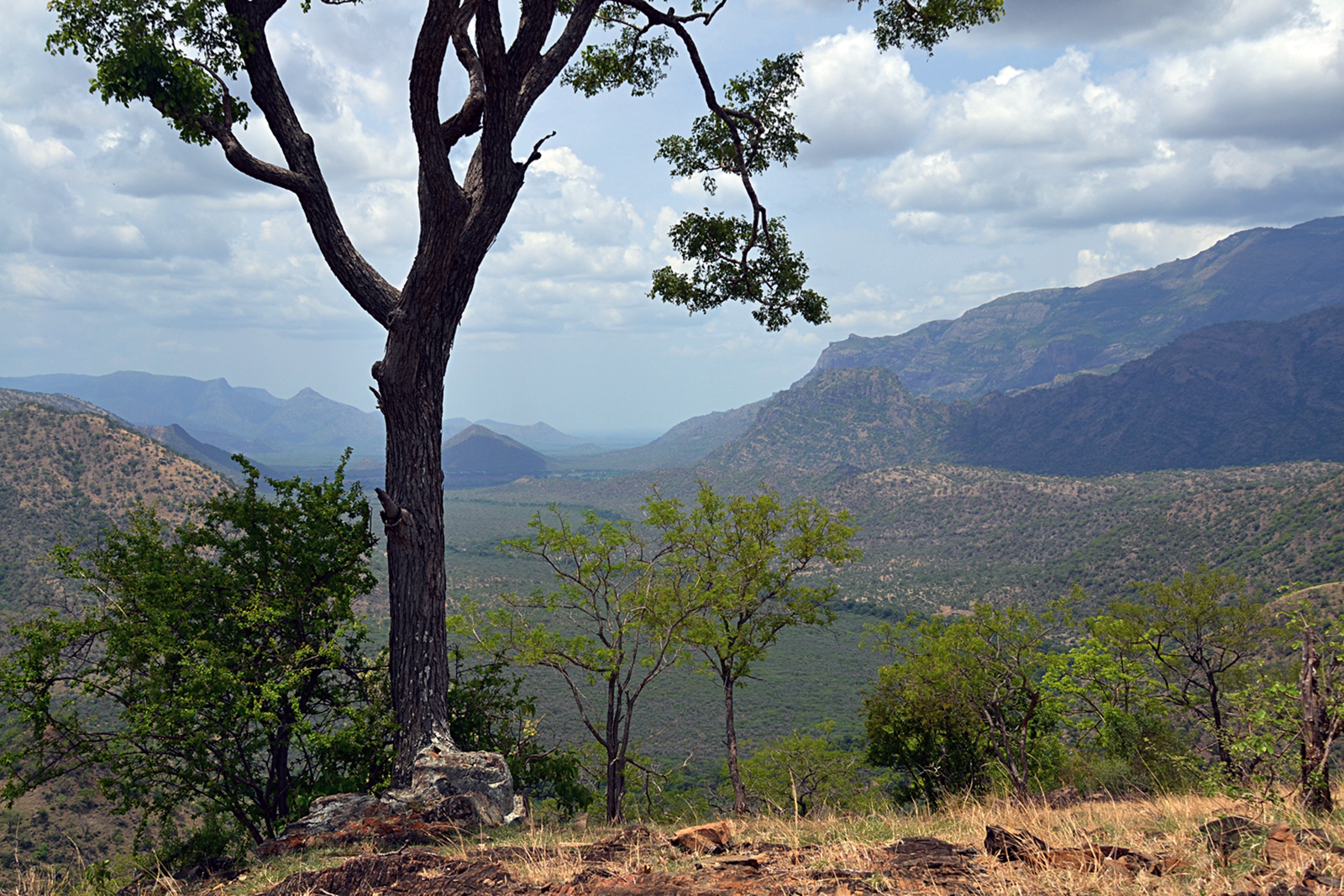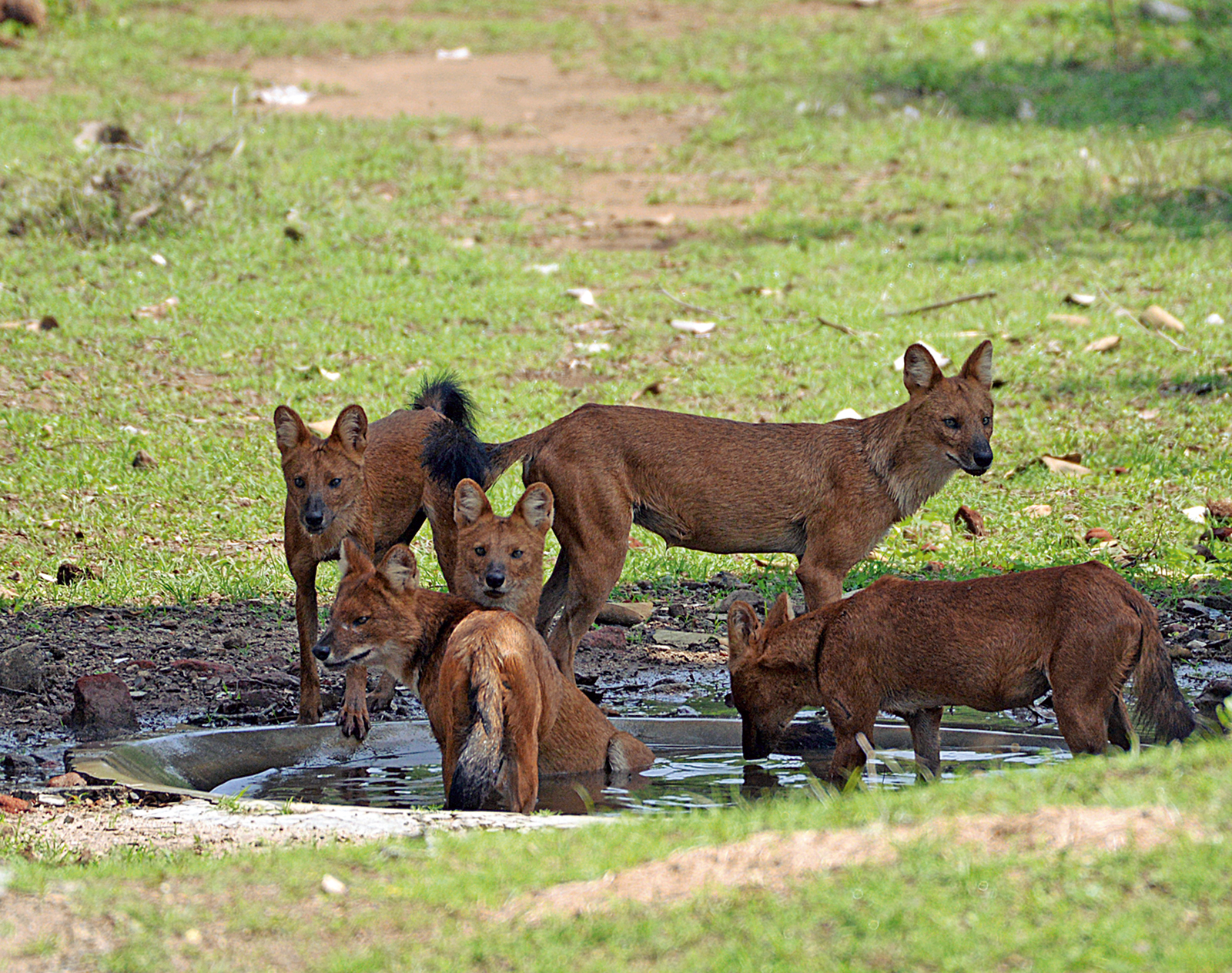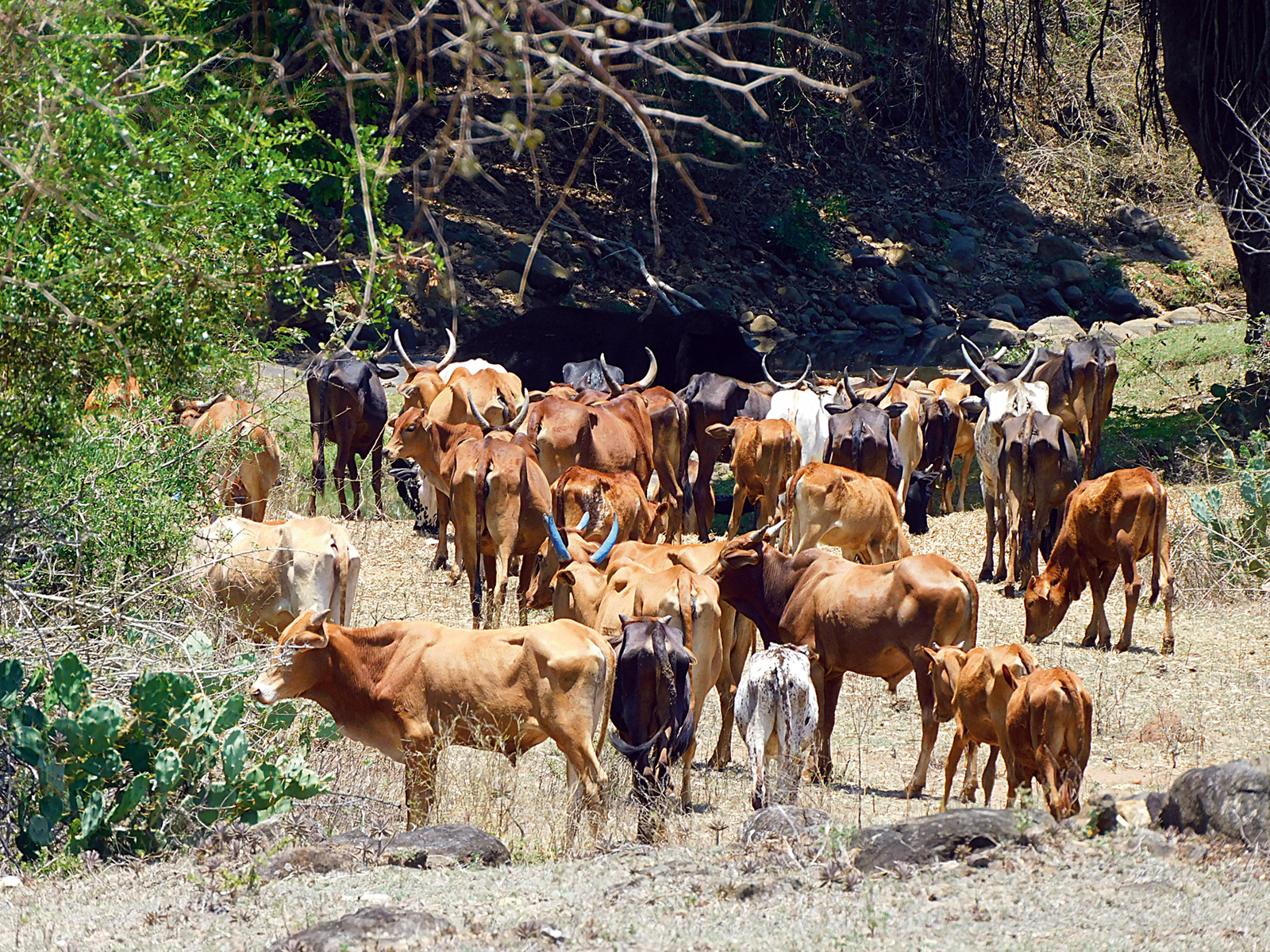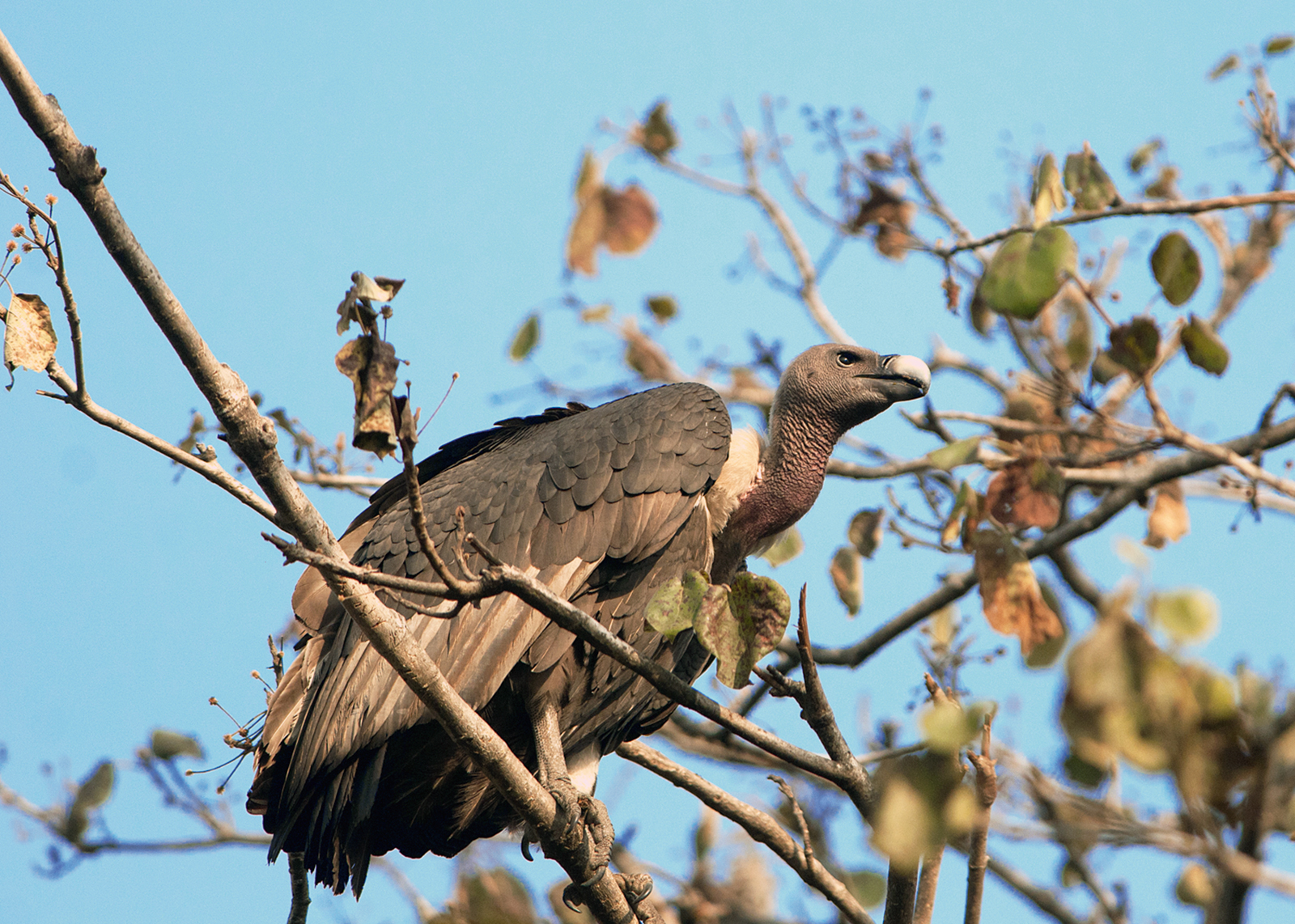In Memory Of A Dhole Pack
First published in Sanctuary Asia,
Vol. 41
No. 2,
February 2021
By Dr. Priya Davidar
I inadvertently got in the way of a hunt while seated on a rock observing wildflowers being visited by bees. A large chital stag headed rapidly in my direction, pursued by the pack. My sudden presence disrupted the hunt – the stag got his chance to escape, and the disappointed dogs yapped and snarled at me from a distance. On another occasion, while they were going around in all directions for prey, my brother Peter whistled like the dogs, and soon two squiggly, half-grown pups dashed towards him enthusiastically, stopping abruptly, and yelping in fear when they realised he was not a wild dog. Hearing their cry, one of the pack members came and took them away.
In the August 2019 issue of Sanctuary Asia, I wrote about a dhole pack that was regularly observed near our home in Sigur, the buffer zone of the Mudumalai Tiger Reserve. There were around 18 in 2014, and by 2016, only two came by, a male and female. Perhaps the larger pack had split up or most of them had met an untimely end. We would never know. We named the male – who had a pronounced white patch on his throat – Mari and the female Devi. Within a year, another male and female joined them. Hunting success relies on numbers, as a larger pack can spread out to stalk, chase, and catch larger prey. Soon, their two newly-matured female pups were old enough to participate in the hunt. The pack of six would show up unexpectedly several times a week, preceded by the swift rush of vanishing deer. Often, we would hear a pathetic and heartrending scream from a victim during a successful hunt, after which they would settle down to rest at the waterhole we had created for wildlife. This pack, like others before them, tolerated our presence, often resting close to the house while we went about our business. I then wrote:
The dhole often see us, but show neither fear nor friendliness, unlike the wild pigs and wild elephants, who most often become comfortable and even friendly after seeing us repeatedly. I came to appreciate the tremendous courage and skills the dhole display to hunt. Their coordination, persistence and care are remarkable. They often wait for a missing member. They split up to trap an unsuspecting deer. There is always sharing, no quarrels, no fights. They love playing with each other, jumping and bounding away in the moments of peace they allow themselves now and then during their exhausting run.
In late 2019, one of the younger dogs vanished, bringing the pack number down to five. By the end of September 2020, we hadn’t seen the dhole pack for several weeks. A neighbour then gave me the news I dreaded… five dholes had been found dead near a village some seven kilometres away earlier that month. It was a pathetic sight, he said, the wild dogs seemed to have been denning. He also said that they had regularly frequented his property and would rest nearby, ignoring the people around. It sounded familiar. Many of the locals, including tribals, were sorrowful at their untimely end. The cause was suspected to be poisoning, and later confirmed in December 2020 by forensic analysis. The poison used was an OPC (organophosphorous compound) pesticide and nerve agent delivered through chital meat, whether laced in a carcass or through meat alone, is unknown.
Several suspects were arrested, but judging by past experience, they would probably be released.
 A view of Moyar valley from Sigur plateau. The plateau links contiguous Protected Areas in the Nilgiri Biosphere Reserve and is a vital wildlife corridor between the Western and Eastern Ghats. Photo: Jean Philippe Puyravaud.
A view of Moyar valley from Sigur plateau. The plateau links contiguous Protected Areas in the Nilgiri Biosphere Reserve and is a vital wildlife corridor between the Western and Eastern Ghats. Photo: Jean Philippe Puyravaud.
The Pains of Poison
A month after this incident, only a sub-adult female and two juveniles remained. The young ran around and played while the female watched warily. They came a few more times after which just one dhole, a juvenile visited. He too disappeared.
After this trio, a couple settled in. They were adults, but not as old as Mari and Devi. They succeeded in hunting deer occasionally, but were surprisingly driven away by gaur and sambar. Once, they both ran into a sounder of wild pigs, a couple of sows with over a dozen young piglets. We thought the piglets were done for. Surprisingly the dogs were hesitant to approach and a sow took the lead to attack and chase them away. They also soon disappeared, but a neighbour mentioned seeing a pair hunting nearby, so we hope they are still alive.
My father, E.R.C. Davidar in his book Cheetal Walk: Living in the Wilderness wrote that during the distemper epidemic between 1964 and 1967, dhole populations were decimated. The hunting success of the few that remained was greatly diminished until they joined up with a pack of feral dogs. Once the dhole pack reached sufficient numbers, they kept the feral dogs away.
Forest fringe communities get very little benefit from the biodiversity next to which they live and often the antagonism spills over for very understandable reasons. The dhole killings I referred to above were preceded by the death of an elderly woman by a tiger on August 31, 2020. She was herding livestock along with three others in a Reserved Forest abutting the Mudumalai Tiger Reserve. By all accounts, it was an accidental attack. The tiger had targeted livestock, causing panic all around and tragically the woman appeared to have got in its way. There was no other subsequent incident, but a tigress was found dead on November 21, 2020 in the same area. She had two very young male cubs that were taken to the Vandalur Zoo near Chennai, to be raised in captivity. A postmortem report confirmed that this tigress too had ingested poison through sambar meat. Villagers had reported livestock losses too. We speculate that the poisoning of predators during this period could have been more widespread than reported, because two leopards and a tigress wandering near our home have also disappeared. And the two small remnant dhole groups that we saw after the poisoning incident, suggest more packs had probably been victims. The collateral damage on other species is impossible to assess due to the lack of available data.
After the loss of these predators, goat herders could be seen venturing kilometres into the Reserved Forests, lopping branches for their animals. Cattle now graze freely in the forest until nightfall. Clearly the absence of predators has facilitated free range livestock herding.
 A dhole pack cools off at a watering hole after a strenuous hunt in the Nilgiris. Wild dogs are formidable pack hunters, coordinating their movements by whistles, and capable of bringing down prey larger than themselves. Photo:Priya Davidar.
A dhole pack cools off at a watering hole after a strenuous hunt in the Nilgiris. Wild dogs are formidable pack hunters, coordinating their movements by whistles, and capable of bringing down prey larger than themselves. Photo:Priya Davidar.
A Bloody History
My father had documented the poisoning of predators by livestock traders and herders in the 1960s, and confirmed that save for stray individuals, no resident tigers were seen in the region until the 1990s, three decades later. He once came across two tiger carcasses in an advanced state of decomposition with nails and teeth intact. They had not been killed for their body parts, which was little consolation because scavengers such as spotted hyaenas, jackals and vultures disappeared overnight. Jackals are now gone and hyena sightings are a rarity. Undoubtedly such poisonings must have taken a toll of the once huge population of White-rumped Vultures even before their dramatic decline in the 1990s at the hands of diclofenac. Fortunately, vultures have now staged a come-back in the region after a hiatus of over 20 years. But their future is clearly uncertain, given a recent increase in cattle density (most probably treated with diclofenac) and chronic instances of intentional poisoning of carcasses. Dung collection for the plantation industry has been, and still is, an important economic activity in Sigur. Cattle are raised here mostly for their organic dung, which is referred to as ‘black gold’. Silori and Mishra in the 1990s documented the grazing of 15,000-20,000 local and migratory cattle in these forests and estimated an annual export of around 2,100 tons of dried dung from the region. Many cattle owners were not residents, leaving the upkeep of their livestock to local herdsmen. Not surprisingly, cattle penetrated five to six kilometres inside the forest causing a downward spiral of ecological devastation involving wholesale land degradation. That over 1,200 sheep and goats are also part of the army of claimants leaves little chance of any regeneration. And coupled with extensive wood harvesting, the highly degraded landscape could take decades to recover, even if free range livestock numbers are curbed or eliminated. After a decade or so of respite on this front, we are back to square one.
India needs to rethink its understanding of sustainable livelihoods. Without biodiversity and intact ecosystems, the Indian subcontinent is unlikely to survive the climate extremes we have brought down upon ourselves.
 Cattle roam freely in a part of the forest, a wild elephant visible in the background. As predator populations dwindle due to poisonings, herders have begun to chop down vegetation and encroach upon the Reserved Forests for grazing. Photo: Priya Davidar.
Cattle roam freely in a part of the forest, a wild elephant visible in the background. As predator populations dwindle due to poisonings, herders have begun to chop down vegetation and encroach upon the Reserved Forests for grazing. Photo: Priya Davidar.
Universal Basic Income
How bleak the future looks may be judged by the fact that the government in its wisdom currently provides free cattle and goats to tribal communities as a ‘welfare’ measure. So, we now must take into account an additional 800 heads of cattle over and above the thousands already turning the depleted vegetation to dust. To make matters worse, these are hybrid cattle and I see no way in which the recipients will ever be able to afford the maintenance costs. Such well-meaning incentives, have turned the once-thriving Sigur plateau into a death trap, a population sink for predators, whose mortality rate far outstrips the birth rate. Emigration from the source population, the core areas of the Mudumalai and Bandipur Tiger Reserves, supplies a steady stream of predators that meet their untimely end in the Sigur and Singara Forest Ranges of the buffer zone. The high turnover of predators might easily be established if camera trap data was available to researchers and conservationists for independent audits, but these have sadly not been put in the public domain.
Using these remnant forests for subsistence or consumption is simply not feasible any longer, however we must recognise that irregular daily wage income is a reality for the large number of below-poverty line households in regions where stable job opportunities are limited. The onslaught of climate change will further marginalise the poor, and increase their dependence on diminishing forests and wildlife for support, as the current COVID-19 pandemic has shown. Poaching has increased in many places due to loss of alterative incomes.
 Poisoned carcasses intended for predators also result in unintended casualties. The once huge population of White-rumped Vultures suffered a rapid decline. Fortunately, they are now staging a come-back in the region after a hiatus of over 20 years. Photo: Public domain/Patty McGaan.
Poisoned carcasses intended for predators also result in unintended casualties. The once huge population of White-rumped Vultures suffered a rapid decline. Fortunately, they are now staging a come-back in the region after a hiatus of over 20 years. Photo: Public domain/Patty McGaan.
In this context, there is growing support for a Universal Basic Income (UBI) worldwide. This was first proposed by Thomas More in his book Utopia in 1516. It’s being discussed by economists as a solution to alleviate poverty in India and elsewhere. For households living in forest fringes, it could provide a lifeline during times of difficulty, and if sensibly implemented, could make it easier to manage unsustainable harvesting and intensive grazing. Forest staff tend to look the other way when wildlife is poisoned or trees are cut, on the pretext that poor people need to survive. A UBI is better than poor households being victims, not beneficiaries, of the ill-conceived schemes dreamed up by those who have little understanding of their impact on nature and society.
The situation on the ground has not improved for people, forests and wildlife over the past 50 years in this region. I am reminded of the writer, Jean-Baptiste Alphonse Karr, who stated aptly in 1849 that “the more things change, the more they stay the same”.
Dr. Priya Davidar is a retired Professor in Ecology and Environmental Sciences. She received her Ph.D. under the guidance of Dr. Sálim Ali. Based in the Sigur region of the Nilgiris, she is active in conservation advocacy and research.
First published in Sanctuary Asia, February 2021.

.png)



